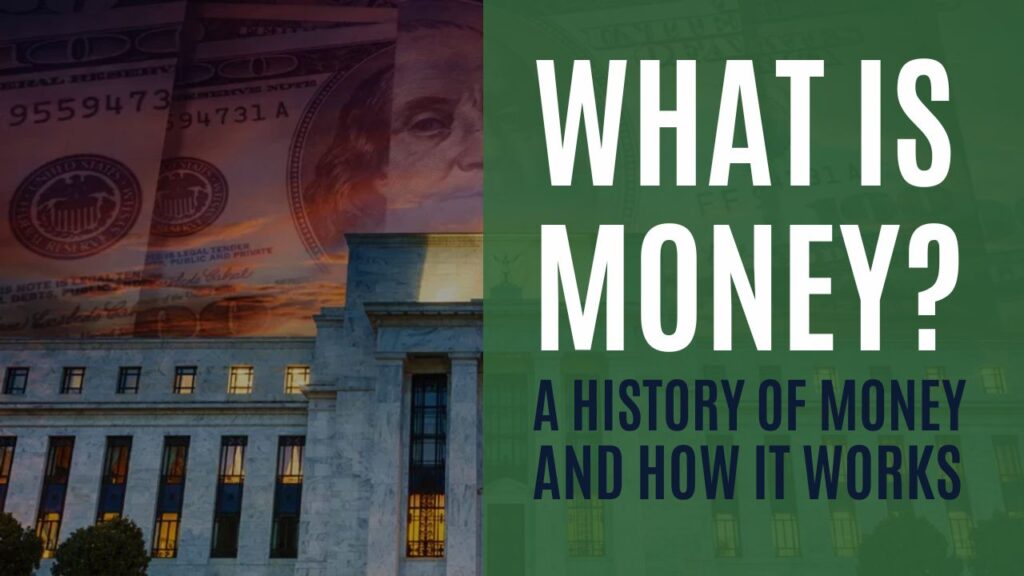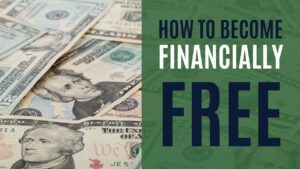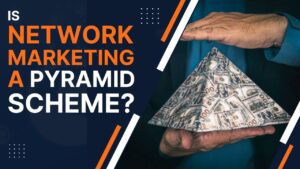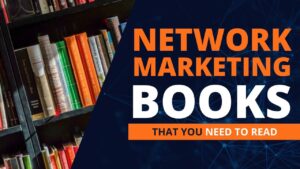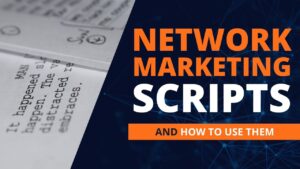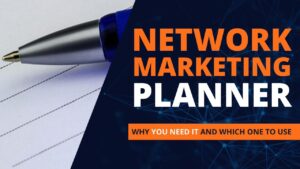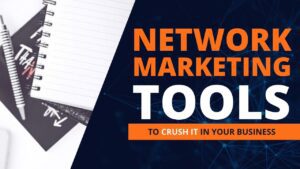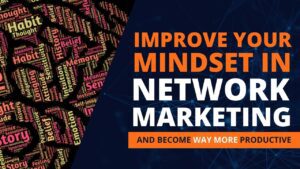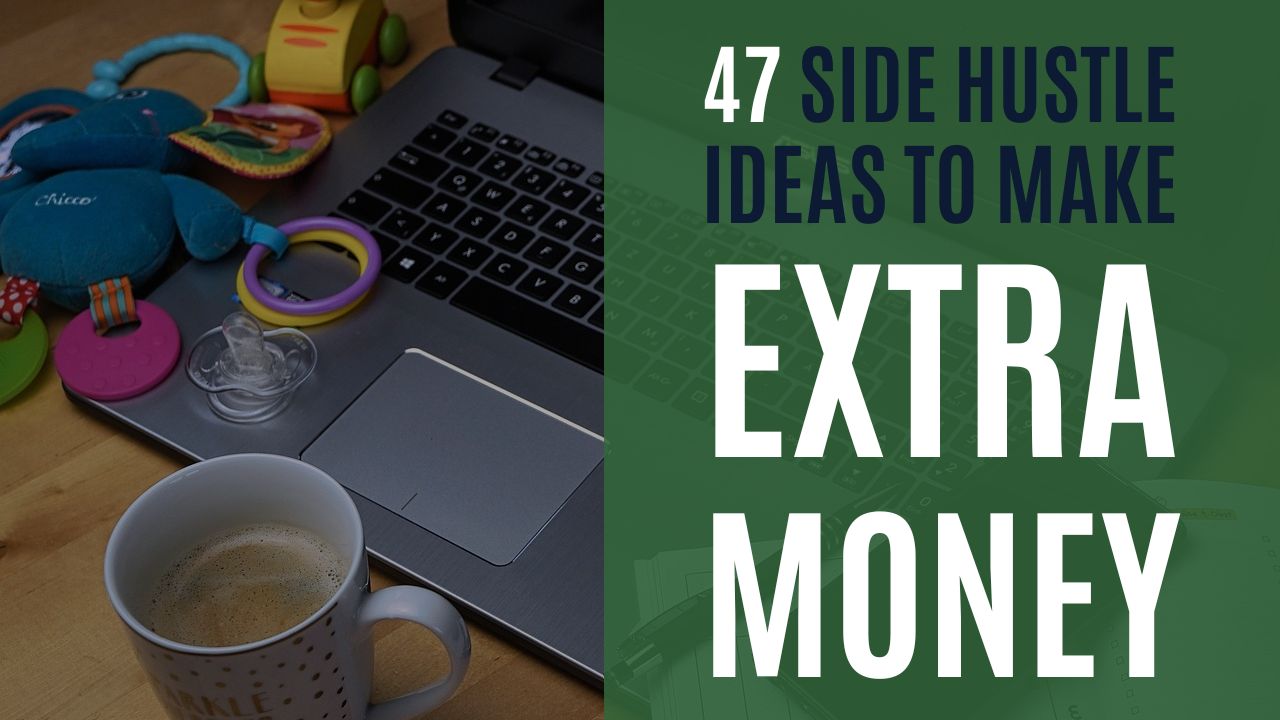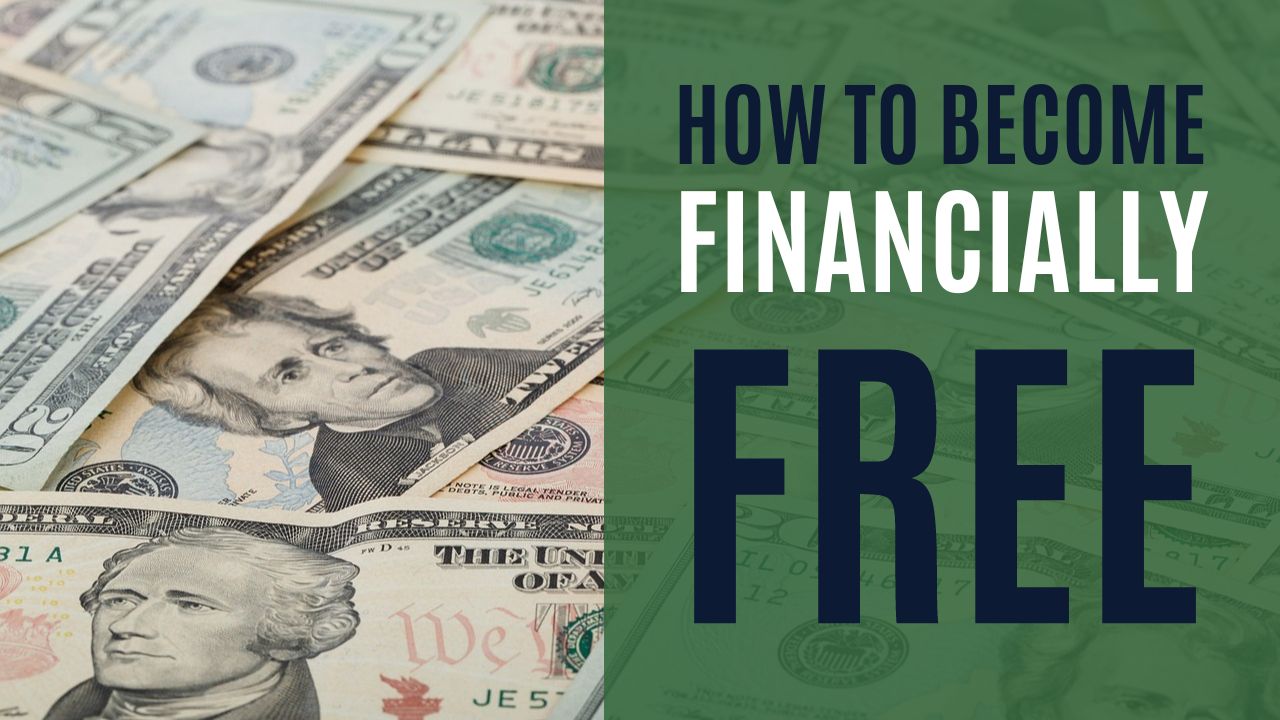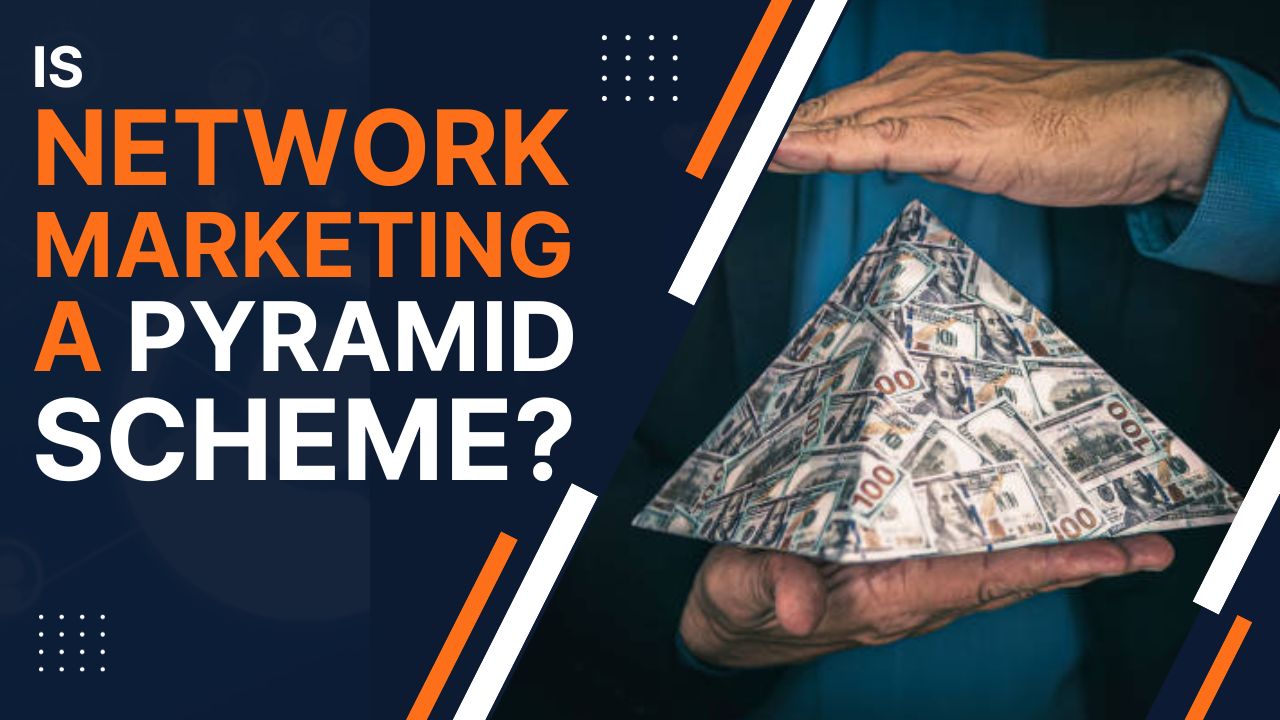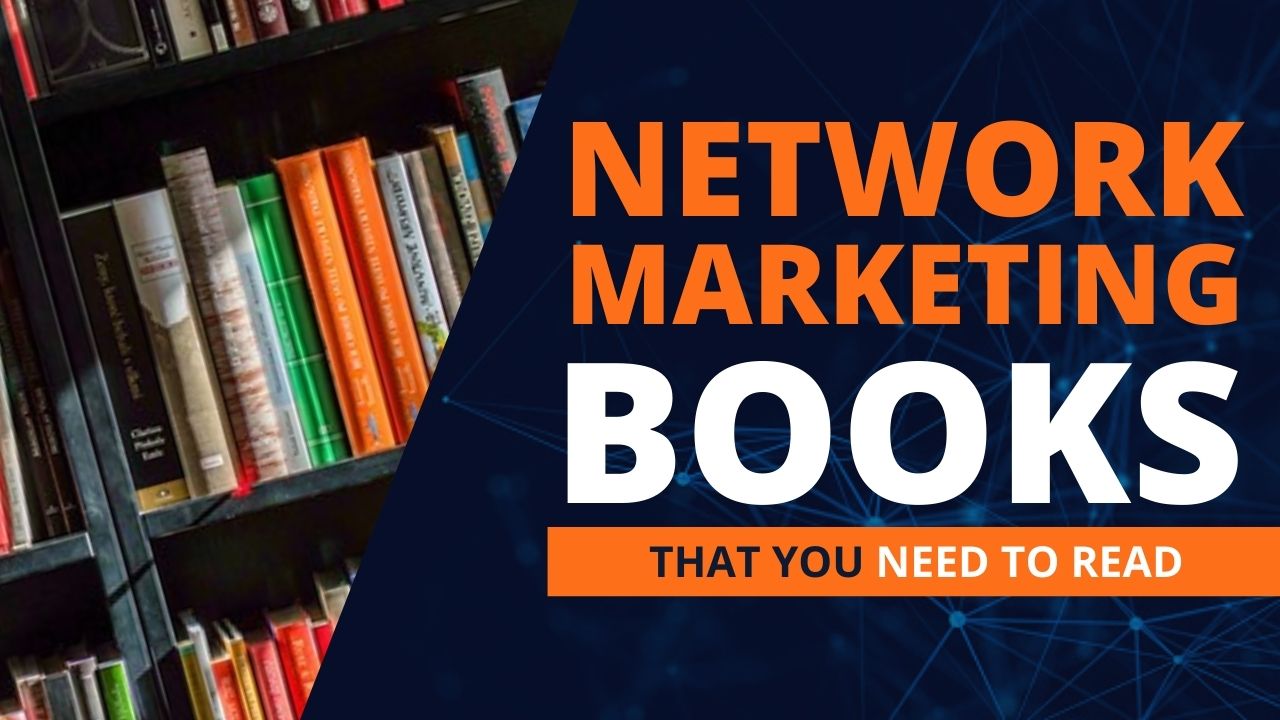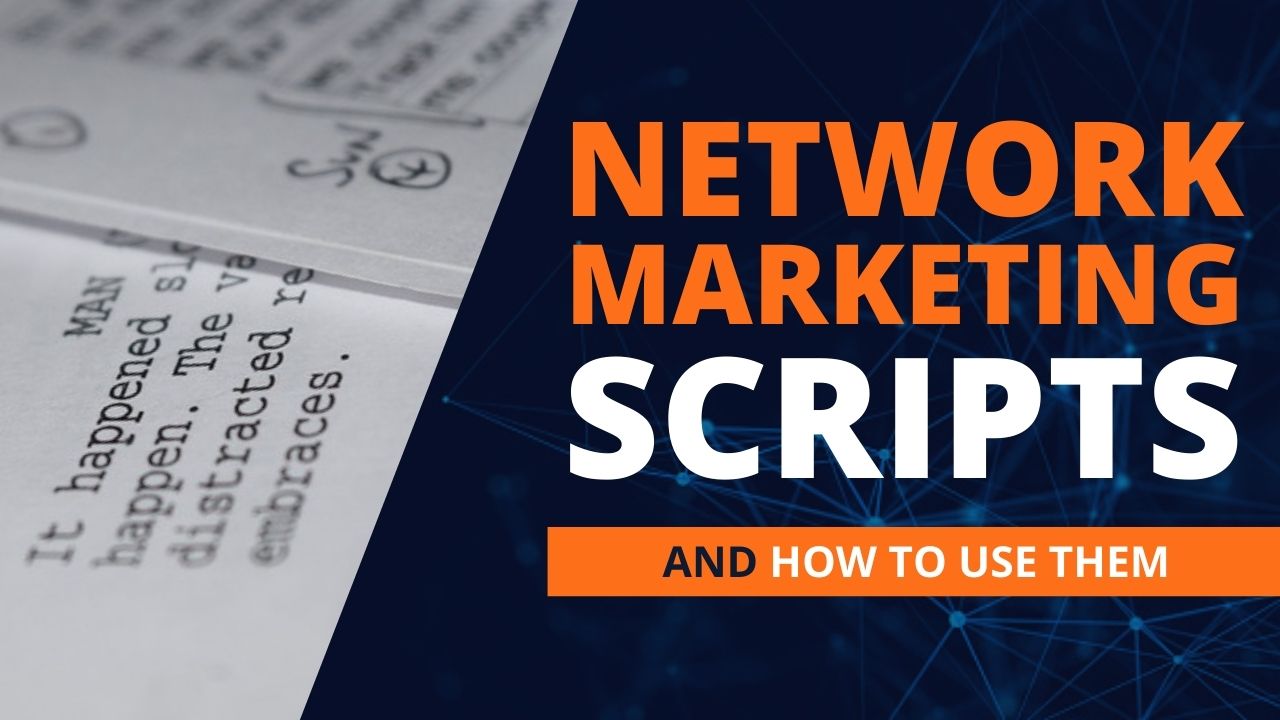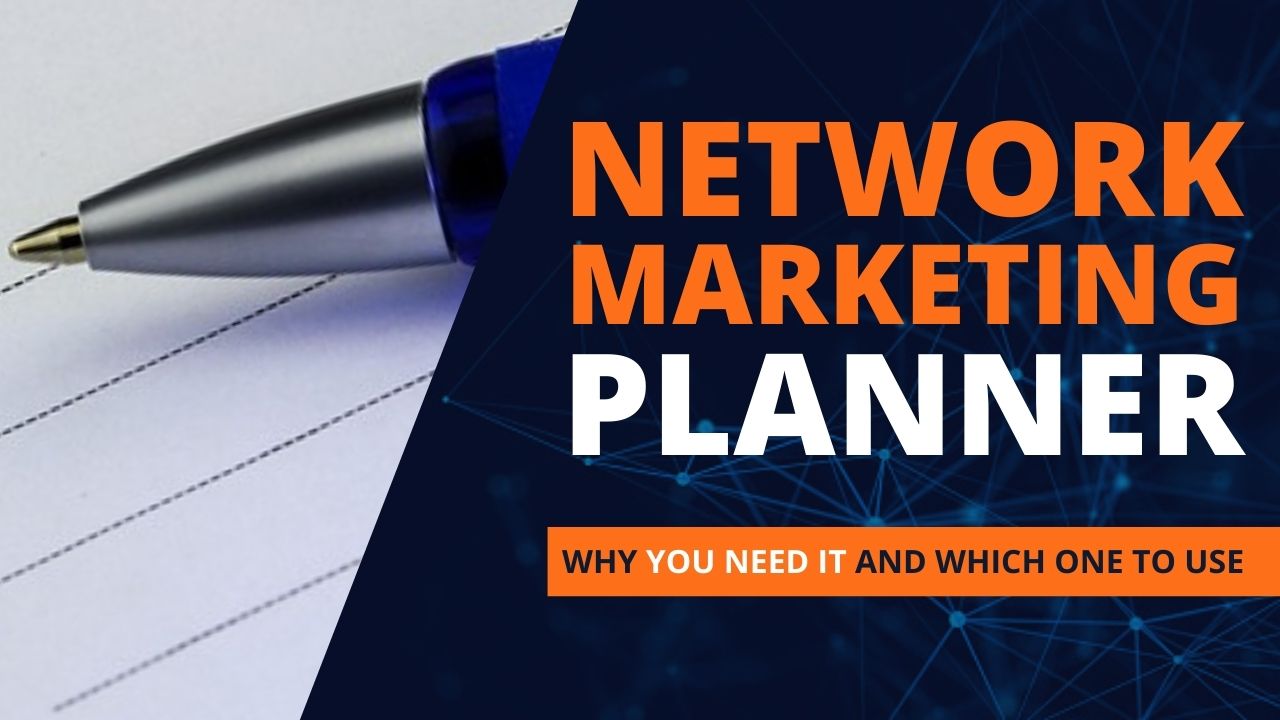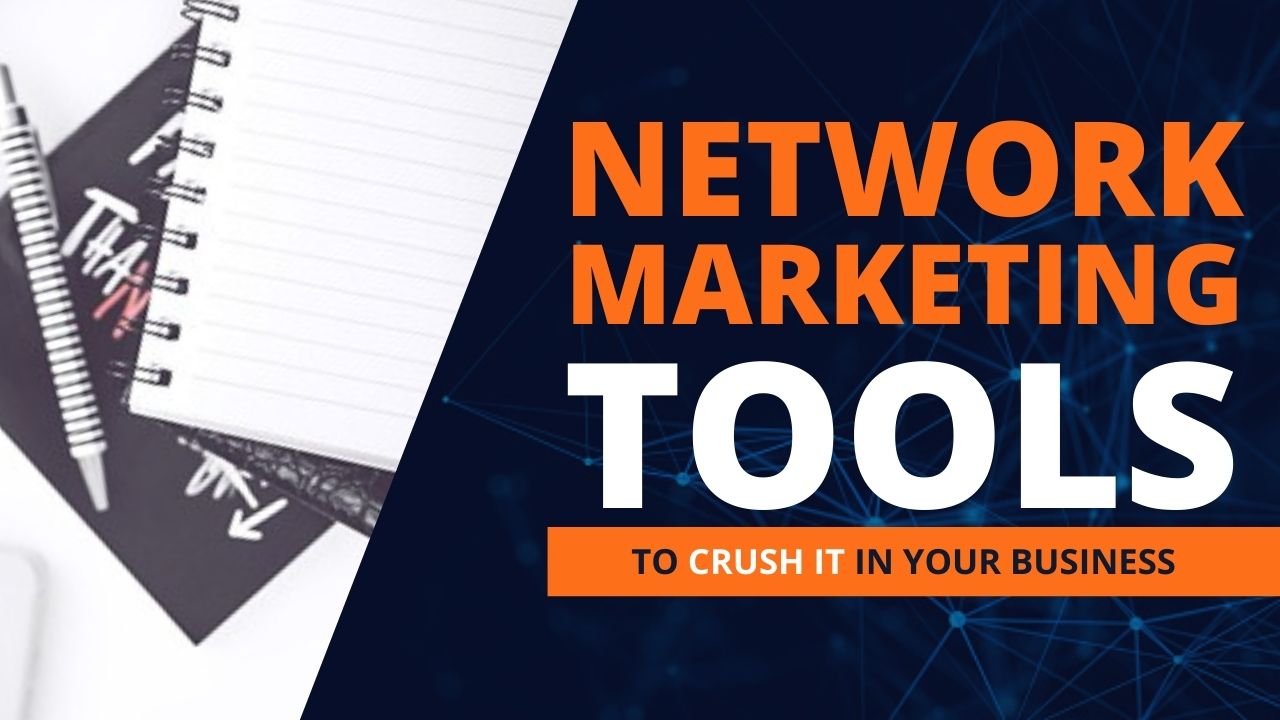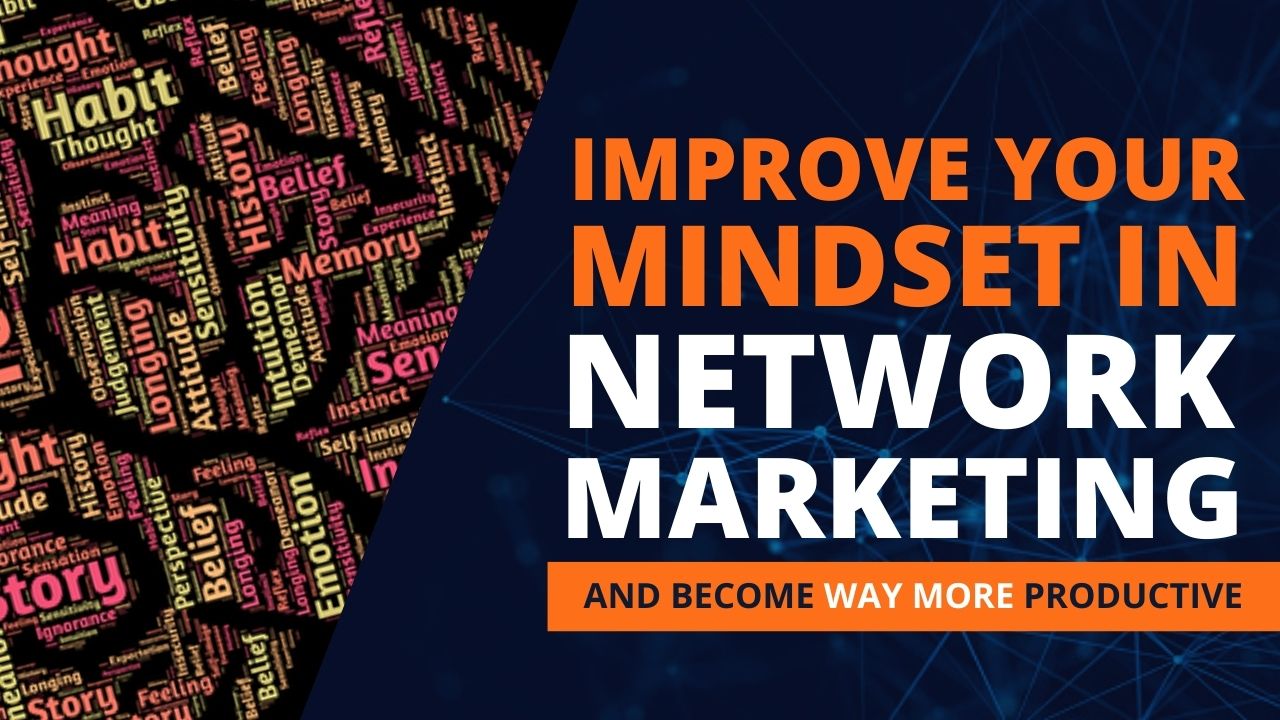One of the most fundamental questions I asked myself after becoming an entrepreneur is: what is money?
Where did money come from?
How does money work?
Years ago, I remember staring down at a 5 dollar bill. I was struck at how important and fundamental this government issued currency was to my life.
We spend the vast majority of our waking hours working to acquire it. And when we’re not working, we’re spending the money we make and giving it to other folks in exchange for goods or services.
But the Canadian government hasn’t always been around. The United States government hasn’t always been around.
How is it that governments have been able to orchestrate the concept of money, this esoteric thing that many of our lives revolve around?
The answer is, they didn’t.
Money is not a creation of government. It’s a phenomenon that comes about organically as a result of large numbers of human beings organizing and cooperating with each other.
Basically, money is just a ledger. It’s a way for us to keep track of how much value each indivdual has accrued. And we can use that stored up value to then conduct trades with each other.
Any economic action is just a value for value exchange. You go to work and exchange value (your time and skills) for value (money). Then you go to the store and exchange value (money) for value (food).
But money has evolved over time. As societies grow larger and technology develops, certain types of money started to become less effective. And humans adapted, adopting new forms of money.
And through this evolution of money, governments have formed a monopoly on it, which is the currency that we all use today.
But the evolution of money is not yet complete. İt continues to evolve, and will likely continue to do so for decades or centuries to come.
Today we’re going to do a deep dive on money.
Where it came from.
How it evolved into what we have today.
And what we might expect in the future.
Having a thorough understanding of how money works can give you a real edge when working towards financial freedom. My hope is that this article can assist in giving you that edge.
Table of Contents
The Barter System

Money has not always been as we know it today. This is an obvious statement, as we all know that printing presses have not existed since the beginning of time.
But the paper currency we all use to buy our groceries today is all we’ve ever known. It’s tough for us to imagine any other way of doing business.
But long before the technology existed, people simply traded with each other in order to acquire the goods and services they needed. This is commonly known as the barter system.
A cattle farmer might offer an ox or perhaps some meat in exchange for somebody or a group of people building him a barn.
Or a wheat farmer would offer some wheat or bread in exchange for some fish.
This system of trade works fine in a small and relatively simple society. But as the society grows larger and more complex, this system starts to break down.
What do you offer if you just need a ride into the nearest town? Or if you want to buy a single glass of water?
Perhaps the water merchant wants an orange in trade… but you don’t have any oranges. You can promise to give him an orange for payment at a later date… but you may not know each other. And can either of you know whether the other is trustworthy?
You can see how the barter system quickly breaks down as the society grows and strangers attempt to interact and transact with each other.
Ledger Money
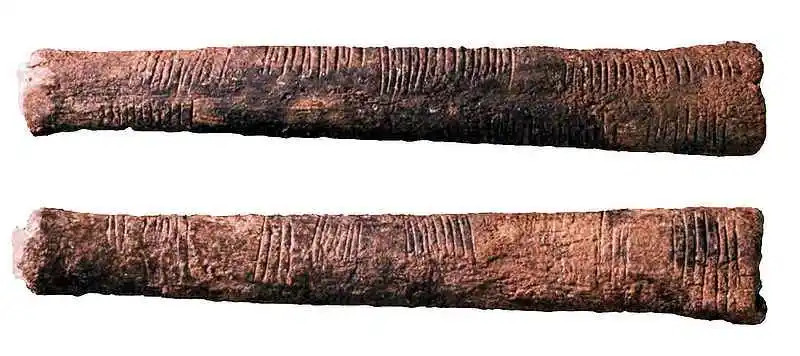
To solve this problem, small societies created ledgers. Instead of trading for goods services, these people would record who owes who and how much, using a simple ledger.
This way, everyone could refer to this ledger to see what is owed to whom.
If you did a job for someone, such a plow a field for a farmer, it would get recorded on the ledger. Thus, the value that you provided to the farmer could be returned to you in a different good or service (by the same farmer or anybody else) at a later date.
And the ledger would be adjusted and reconciled.
This solves the problem known as the coincidence of wants.
If you want to trade Good A for Good B, but the other party doesn’t want or need Good A, the transaction stalls. And you’re unable to acquire Good B.
But if you have a centralized ledger on which you can record the value that Good B represents, then you can still get the good that you need. But you will owe the other party Good B, or something of equivalent value.
This ledger system can work quite well in a small society such as a hunter gatherer tribe. These ledgers have historically been kept on:
- Clay or stone tablets
- Bones (tally stick)
- Bamboo or wooden sticks
- Knotted string
But you can imagine how complicated keeping the centralized ledger would become as the tribe grows and various goods and services are introduced into the primitive economy.
This is where money as we know it starts to develop.
Commodity Money
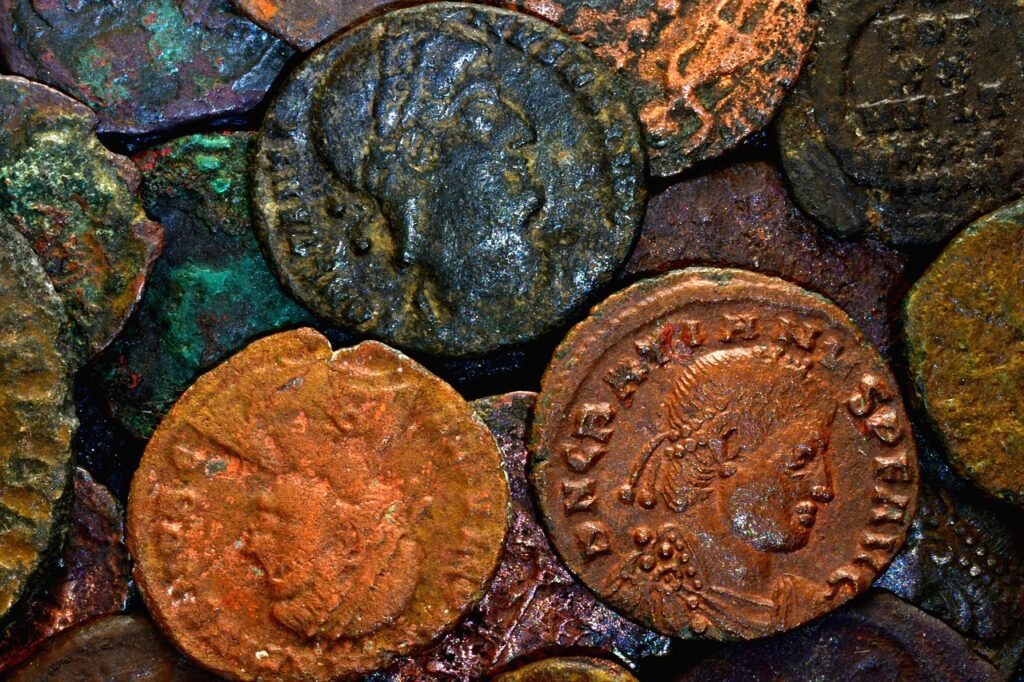
Money is not an invention of the state, a king, or any type of government. Rather, it’s a product of human cooperation. It comes about naturally, organically, as societies grow larger.
As people start to specialize in a trade or craft and wish to trade their skills for other things of value, it becomes completely untenable to keep track of all the transactions on one centralized ledger.
So people learned to use money. Money is simply a way of abstracting the ledger. Instead of manually recording value provided on one tablet or tally stick, the value is instead stored in a good or commodity that everyone in the society accepts as payment.
True money is a medium of exchange. It’s the most salable good in the economy. The good with more demand than any other good or service.
A good money is able to purchase any good or service in your society. Because it’s something that everyone wants. No matter what good or service is rendered, the merchant or tradesman willingly accepts this one good (money) in trade.
Ideal money is also a store of value. It should allow people to store value over time, allowing them to secure their futures.
If a poor form of money is used, such as feathers for example, the money will be diluted over time. This is because many, many people will start hunting for birds as an easy way to acquire the feathers (money).
The market is then flooded with the money. The money becomes diluted, and loses value. This is known by today’s vernacular as monetary inflation.
Properties Of Good Money
Carl Menger, the founder of the Austrian School Of Economics, thought that real money should be:
- Divisible
- Portable
- Durable
- Fungible
- Verifiable
- Scarce
Divisibility
In order for a money to be an effective medium of exchange, it needs to be divisible into small quantities. This allows for a customer to make both large and small purchases from a merchant or tradesman.
If, for example, you try to make a small purchase with livestock, you cannot divide an ox or cow into smaller pieces… unless you butcher it and sell it as meat. Which, of course, requires a specialized skill.
Portability
Money also needs to be portable so as to allow you to easily travel with your money. If you’re transacting with livestock or fish, it’s extremely cumbersome to move around with your medium of exchange and conduct economic actions.
Durability
Money should also be durable so as to stand the test of time.
If you’re transacting with livestock, meat, or wheat, it will spoil over time. This prevents you from storing value over long periods of time (saving). Because you will always need to be in a hurry to get rid of your “money”.
Fungibility
Fungibility is a term you may not be familiar with. Dictionary.com defines it like this:
(especially of goods) being of such nature or kind as to be freely exchangeable or replaceable, in whole or in part, for another of like nature or kind
The paper currency you use today is fungible. For example, you would have no issue with trading my 5 dollar bill for your 5 dollar bill. They are, in essence, identical. One fiver is just as valuable to you as another fiver. You could care less which one you have.
But if you’re trading livestock, this would be an issue. Because your cow may be fatter than your neighbor’s cow… and you would not be willing to make a straight-up trade with your neighbour.
One cow is more valuable than the other… thus, not fungible.
Verifiable
With a good money, it should also be easy to verify it’s legitimacy. In other words, it should be exceedingly difficult to counterfeit.
This is why paper currencies of the day contain watermarks and security threads. As technology advanced, it became very easy for any private citizen to simply print out their own currency using any printer you might find at a local Wal Mart.
So governments were forced to issue bank notes with watermarks that can not be easily replicated.
Scarce
Good money should be scarce and difficult to produce.
As we mentioned earlier, some ancient societies used feathers as money. But this incentivized too many people to become bird hunters in order to acquire this form of money.
The money then becomes too plentiful in the economy and gets devalued. And the poor suckers that are unable to hunt down their own birds see the value of their money drop quickly.
We are also witnessing this phenomenon today. Authorities (governments and central banks) are printing money like madmen, resulting in the devaluation of our currency.
This monetary inflation is most difficult on the poor and middle class who are just barely scraping by as it is. Most of them do not own real estate or other hard assets that can store value for them.
But we’ll get to all that later!
Types Of Commodity Money From History
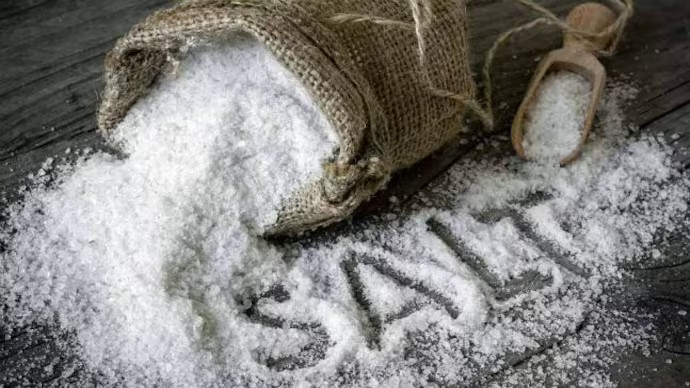
After moving on from simple ledgers to maintain and operate economies, people have used various forms of commodity money in order to abstract that ledger. This has allowed for billions of people all over the globe to interact and transact willingly with each other. In turn, the human race has flourished in miraculous ways.
It has allowed us to be able to pursue our passions. Since you don’t have to worry about going out and hunting down your meat, you are free to spend your time crafting other skills.
You don’t need to know everything. Instead, you can specialize in a passion. You might have a passion for baking. So you can spend your life baking, and then trade your baked goods for money. There’s no need to worry about learning how to fix your car. Someone else has decided to specialize in that. And you can simply bring your car to the professional mechanic and trade his services for some of your stored up value (money).
But the types of money we’ve used over the years has evolved.
Chickens, Livestock
This goes back to the days of barter. We’ve discussed the problems with using this type of money.
Chickens and other livestock are not easily divisible. They’re cumbersome to transport. They get old, spoil, and die over time. They’re not fungible.
They are, however, quite verifiable. You can’t “counterfeit” a chicken… so this type of money does actually pass this one test.
Salt or Sugar
Salt was often used alongside cattle as money. Since cattle are so cumbersome to transport and not easily divisible, people would use salt as a money that coexisted with the cattle.
Think of the way we use pennies today. Salt could be traded in tiny quantities, allowing for smaller purchases or trades. Additionally, salt could be stored for extremely long periods of time without spoiling.
It was relatively scarce, too. Considering the technology available at the time, salt actually passed all the tests of good money.
It was divisible, portable, durable, fungible, verifiable, and quite scarce.
Fabric or Furs
Fabrics were also commonly used as currencies or money. There are historical records showing that this was the case in Africa, Asia, and Europe. In fact, Iceland used a type of fabric as money well into the seventeenth century.
It actually worked quite well. They’re durable as they don’t spoil over time. They’re divisible and easy to transport. Plus, the fabric would slowly flow out of the money supply as it was transferred to everyday use for clothing. This would keep inflation at acceptable levels.
Beaver furs were also an extremely common form of money after the early European settlers arrived in North America.
Feathers
We’ve covered the problems with using feathers as money. They’re not really divisible or durable. And they most certainly are not scarce and produce bad incentives within an economy.
Beads, Pebbles, or Seashells
For centuries, aggry beads were used as money in Western Africa. The history of the beads is not well known, though some historians suggest that they may have come from meteorites.
These beads were precious in an area of Africa where the technology to make glass was not available or was prohibitively expensive. They were not very common in the area, making them valuable and salable across time. They were also small in size, making them easy to transport and conduct economic trades.
When European explorers landed in Western Africa, they quickly realized the monetary role that these beads played. They started importing them since they were easy and inexpensive to acquire in Europe.
This casued the beads to be devalued (inflated), resulting in the Africans’ purchasing power being diminished. To make matters worse, the Europeans were able to acquire precious resources from the Africans with the beads that they brought from back home. This obviously resulted in a massive wealth transfer to the Europeans and the desperate impoverishment of the native Africans.
These beads came to be known as slave beads due to the role that they played in the enslavement of the African people to the Europeans and North Americans.
Using bad money in an economy can have devastating consequences that can last for hundreds of years.
Copper
As technology improved and economies became more complex, major problems started occurring with the moneys we’ve already discussed.
People started gravitating towards metallic forms of money. One of the first metal moneys used was copper, and it was used by various people groups all over the world for thousands of years.
It’s divisble since it can be melted down and made into small coins. This then makes it quite easy to transport. The problem is that copper is susceptible to rust and corrosion, making it a poor form of money to save for the very long term.
It’s also very abundant on earth, and this became a problem as technological advancements allowed us to develop avanced mining techniques.
When copper was used as money, mining the metal became a very lucrative business. This caused the economy to be flooded with the metallic money, devaluing it and causing rampant inflation.
Silver
The imperfections of copper money slowly caused people to turn to silver. Like copper, silver is divisible, portable, and fungible.
It’s also much more scarce than copper. And unlike copper, silver doesn’t rust or corrode.
But using silver as primary money didn’t work for long… for 2 main reasons.
First of all, silver is relatively scarce. At least, there is theoretically a fixed amount of silver on planet earth. However, it was still abundant enough that the price of the metal remained relatively cheap.
This meant that transporting a large amount of value became very difficult and cumbersome, especially when covering large distances. When moving a vast amount of value (in the form of silver) across the ocean, for example, it would translate into a massive amount of weight. This made it extremely expensive to transport money between 2 economic actors. Especially large ones such as corporations, royal families, or nation states.
The second reason silver alone didn’t cut it was due to technological advancement. As the metal started to be used in machinery, dentistry, and other trades, the price of the metal started fluctuating.
The price volatility caused by the supply and demand dynamics made running an economy on silver very difficult. Economic actors were unable to predict what the value of their money would be in the future.
For these reasons, people turned to gold.
Gold
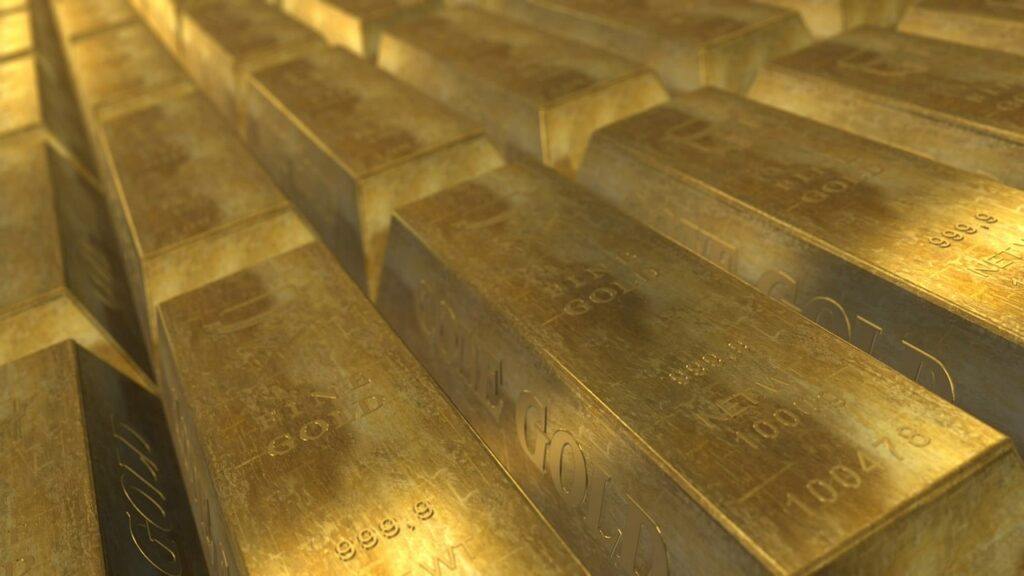
Gold was used in conjunction with silver and copper for over 2500 years. Gold was used for larger purchases, while silver and copper were reserved for medium and small purchases respectively.
Like the other monetary metals, gold is easily divisible. It’s also portable, at least over short distances, and for small to medium purchases.
It is also the most durable substance known to man, since it is essentially undestroyable. It does not rust, corrode, or tarnish. It can be melted down, yes, but not destroyed. This makes it an ideal substance for storing value over very long periods of time.
It is also fungible. One ounce of pure gold is equal to one ounce of pure gold. You don’t care which one you have because they are identical in every way, including in value.
It is also relatively easy to identify fake gold, making it difficult to counterfeit.
And it is scarce. Gold is much less abundant in the earth than silver or copper. Even with mining technologies and vast sums of capital available to mining companies, the total amount of discovered gold on planet earth is only inflated by roughly 2% per year.
This is why gold has maintained it’s value over hundreds (perhaps thousands) of years. Since it maintained it’s value so well, people started to organically gravitate towards using gold as their main way to save for the long term. It was in their best interests.
No government had to force anyone to use gold as their money… it simply happened naturally. It was simply because the incentives drove the human population as a whole to decide on gold as their saving and spending technology.
But gold wasn’t perfect either.
The Problem With Gold
For a time, gold was almost a perfect money.
But as governments became desperate to hold onto power and meet the populist demands of their people, they implemented price controls. This allowed them to provide cheap food to their citizens and buy the politicians some temporary popularity.
The most common example of this is Nero, who ruled the Roman Empire as emperor from 54-68 AD. His citizens learned of the easy life that people had in the cities due to the price controls that provided a low cost of living. Folks started started leaving the toil of living in the country to move to the cities and live off the emperor’s “generosity”.
This caused a drastic rise in unproductive citizens due to all the people choosing to live off of the ruler’s largess instead of working and being economically productive citizens. This in turn lowered the tax income that the emperor was able to bring in.
To keep the government from going broke, Nero came up with a solution that’s remarkably similar to what governments are doing today… he inflated the money supply.
But instead of using fancy math that even bankers can’t understand, he simply debased the coins. The aureus gold coin was debased from 8 to 7.2 grams of gold, while the denarius’s silver content was reduced from 3.9 to 3.41 grams of silver.
As far as most of the citizens were aware, the money hadn’t changed. The debased currency was simply fed into the money supply slowly, and all the excess gold and silver was kept by Nero for his empire.
This certainly gave the empire temporary relief of it’s income problem. But it sowed the seeds for future emperors and kings to take the same desperate actions to hold onto power and win temporary popularity. This directly led to the fall of Rome.
It still took a few hundred years, but by the time Diocletian was ruler (284-305 AD), the silver denarius coin had a bronze core. It was wrapped with such a thin coat of silver that it would simply wear off due to wear and tear. This ended the denarius as a silver coin in Rome.
As the money was inflated, corruption, populism, lawlessness, rioting, and an irrational desire for speculation became rampant in the society. The money hyperinflated, the armies were conquered, and the citizens disavowed their land. They were reduced to mere peasants scattered in isolation all over the land. They were at the complete mercy of any authoritarian lord or dictator that would come along, of which there were many.
A generation later, the Roman Empire, the greatest empire the world had ever seen, collapsed into memory.
These are the consequences of trying to actively manage a money system and/or economy. The consequences may not come quickly. But when they come, they are dire.
The Roman Empire is not unique. There are many examples of this in history. If there is a way, governments always try to manage the money supply for their own selfish gain. They are human after all. But it always has the same devastating consequences.
Hyperinflation is not just a problem of history. Over the last century, there have been multiple cases of nations nearly collapsing from currency abuse.
A few examples:
- Hungary (1946)
- Zimbabwe (2008)
- Yugoslavia (1994)
- Germany (1923)
- Greece (1944)
The Gold Standard
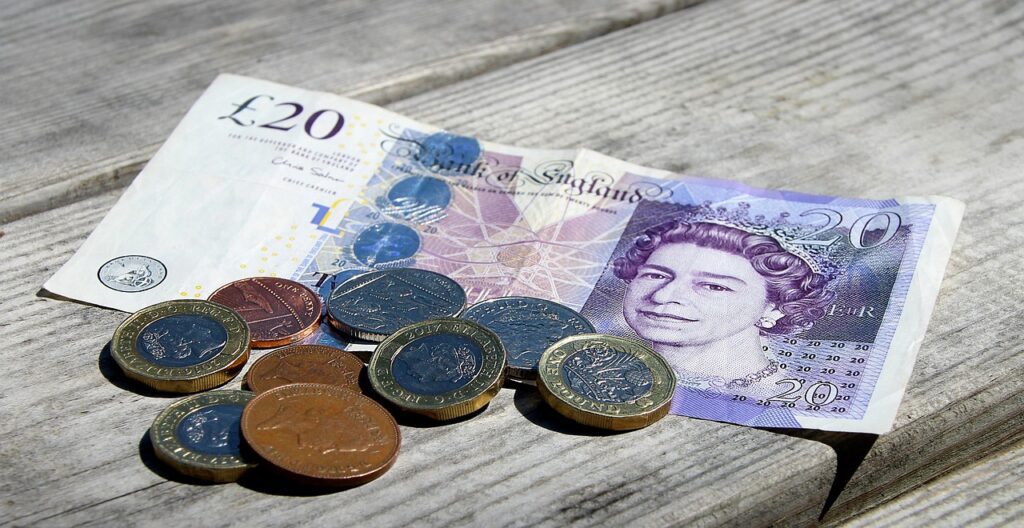
By the 1800s, gold had won out as the preferred money over much of the world. It was used all over Europe, North America, and Australia.
Improvements in communications technology (such as the telegraph) led to gold being abstracted. Banks started offering people paper bank notes, which represented a claim on the gold stored at the bank.
People tended to find this very convenient. Carrying around paper notes was much more convenient and weighed much less than lugging around bags of physical gold. Eventually, the paper claims won out, and they were just as widely accepted in the economy as physical gold was.
After a while, many people even preferred the lighter and smaller bank notes to the golden metallic money.
The bankers took notice. Knowing that not everyone would ever withdraw all their gold at once, the banks started issuing more paper claims than the gold they held.
Fractional reserve banking was born.
Fractional Reserve Banking
Great Britain adopted a gold standard in the early 1700s. Under the strict gold standard, the nation flourished and became the most powerful empire that had ever existed.
Due to the finite supply of gold, government spending was limited. The government was unable to to simply “print” more money. And so a culture of democracy, personal freedom, and free market capitalism developed in the nation.
But it didn’t last long. As distrust in the government grew, citizens hesitated to store their private gold in government run facilities such as the Royal Mint. Instead, they started storing their gold with private goldsmiths.
While goldsmiths mainly fashioned jewelry and other items from gold, they started to play a larger role in the monetary system. As more people started storing their gold with these businesses, the goldsmiths started lending the gold out.
When a citizen would come in for a loan, the goldsmith would issue paper notes that were “as good as gold” in the British economy. Citizens were under the impression that a paper note represented physical gold in a vault.
How wrong and naive they were.
The goldsmiths quickly realized that nobody ever withdrew all of their gold. So they were able to create more paper notes than was backed up by physical gold in their vaults. Essentially, they were creating money out of thin air through the practice of lending out money. They were expanding the money supply, even though that was supposed to be impossible under a gold standard.
In 1693, the Bank Of England was started. One of the first central banks in a modern democracy.
The Gold Standard In The USA
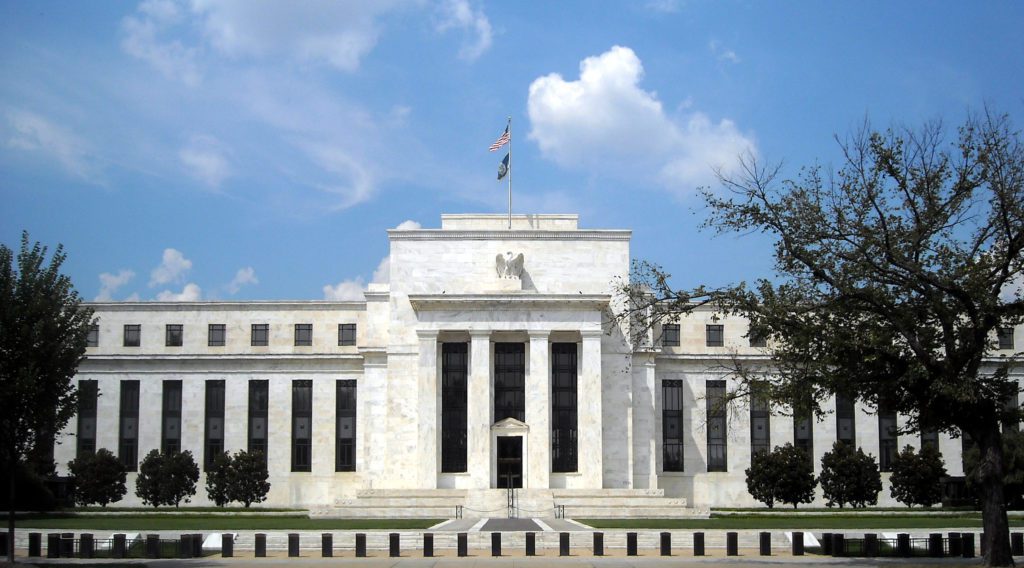
At the same time, the United States and Canada were largely operating under a gold standard too, although that wouldn’t be made official in the US until 1900. This was the free banking era, and was quite similar to the goldsmith style of banking seen in Great Britain.
Each individual bank was free to hold a depositor’s gold and pay whatever interest rate they and their customers agreed upon. Like the English goldsmiths, the American banks lent out more money than they actually held in gold.
If a bank behaved too irresponsibly and the customers got wind of it, they would demand their gold back. The bank would experience a bank run, and it would collapse.
This did happen on a regular basis, but most of the banks intended to stay in business for a long time. So they treated their customers fairly and dealt with the gold they held in a responsible manner. While they still employed fractional reserve banking, most of the banks were exceedingly careful. They were competing with thousands of other banks for the business of US citizens.
The bad actors were weeded out as they collapsed, and only the best banks survived.
So while the currency was constantly expanding due to the lending practices of the free banks, there were 2 main limitations:
- The finite supply of the gold backing the currency
- The bankers’ desire to win long term business by behaving responsibly
Because of these limitations, consumer price inflation was volatile over the short term, but very stable long term.
The United States economy flourished for a century.
Until fiat currency happened.
Fiat Currency
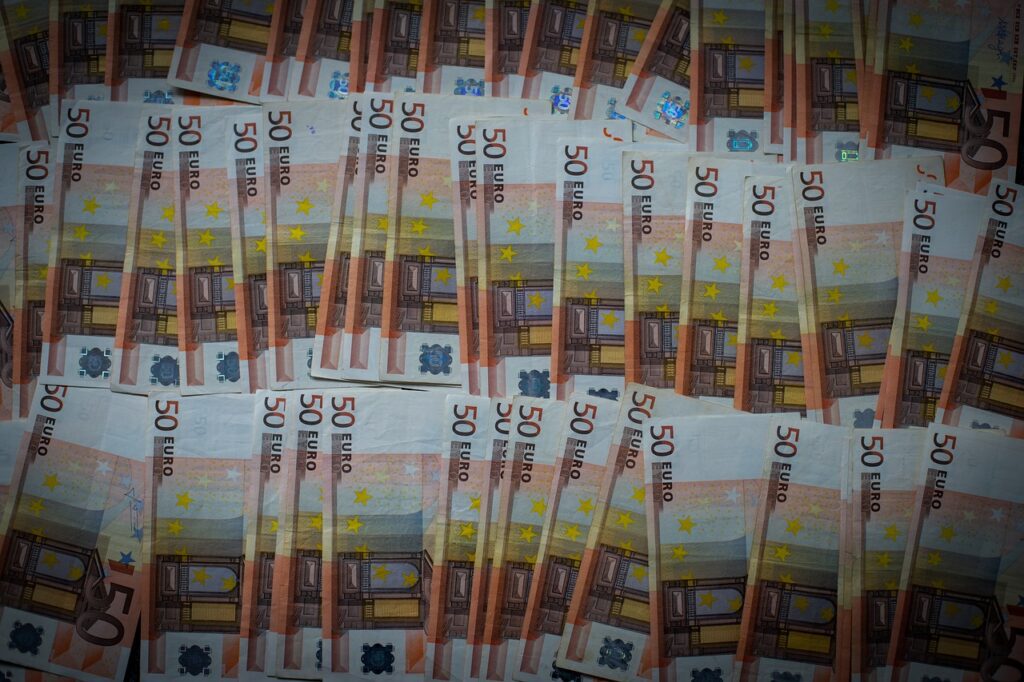
Historically, governments have attempted to issue paper currency backed by nothing at all. These fail quickly because there’s no backstop preventing the government from printing the currency into existence on a whim. The earliest recorded example of this is in China, over 1000 years ago.
Fiat means:
a formal authorization or proposition; a decree
Fiat currency is essentially a currency that exists because the government of the day says it should exist. They pass laws decreeing that taxes must be paid using their government currency. This creates the demand necessary for the currency to have staying power.
In 1912, JP Morgan testified in front congress. He is reported saying:
Gold is money. Everything else is credit.
In the early 1900s, Henry Ford was widely reported saying:
It is well enough that people of the nation do not understand our banking and monetary system, for if they did, I believe there would be a revolution before tomorrow morning.
The currency we use today is no longer backed by gold or any type of commodity. But it is not backed by nothing… it is backed by debt, or credit, as JP Morgan noted when speaking to congress over a century ago.
The United States officially ended the gold standard in 1933 under the Roosevelt administration. They made it illegal for US citizens to own physical gold. They were required to turn in all of their gold to the government in exchange for US dollars.
This officially ushered in the era of fiat currency.
But we need to back up a bit…
The Federal Reserve plays an enormous role in the fiat currency standard we use today.
The Rise Of The Federal Reserve
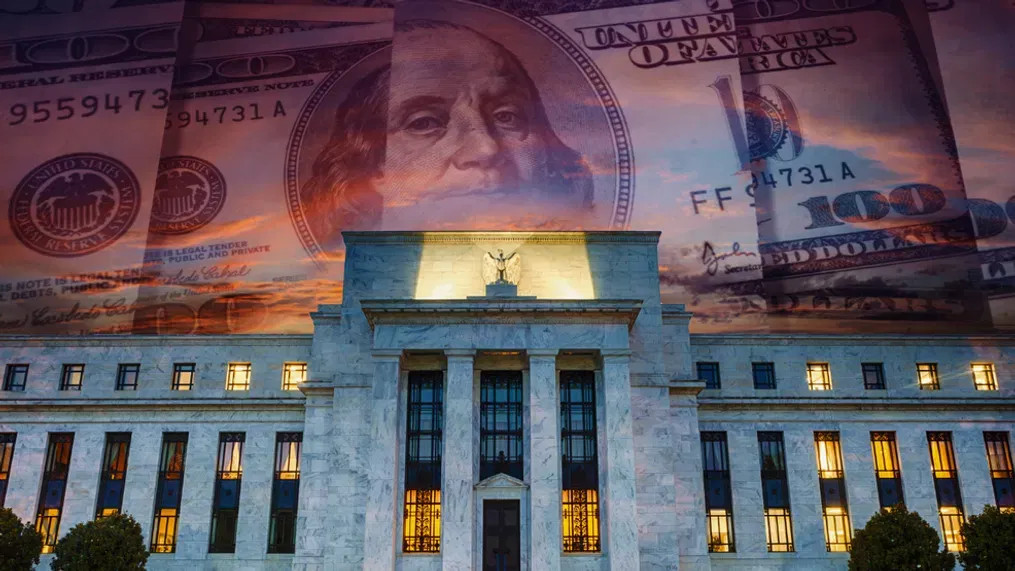
Because of the short term volatility in price inflation and numerous local bank runs during the gold standard, the Americans created the Federal Reserve, the central bank for the nation.
The Fed was started in 1913 when Woodrow Wilson’s administration passed the Federal Reserve Act. The central bank exists for 4 main reasons:
- Control the money supply
- Regulate commercial banks
- Set interest rates
- Lender of last resort
The first 3 reasons are self explanetory. But what does it mean to be a lender of last resort?
When a commercial bank or other financial institution gets into trouble, the Fed will step in and provide whatever sum of money is necessary to keep the institution from collapsing.
It’s important to note that the Fed can not arbitrarily create money out of thin air in order to do this. There are some hoops to jump through.
Quantitative Easing
The Federal Reserve has a balance sheet. And in order for the central bank to remain solvent, the asset side of the balance sheet has to add up to or exceed the liability side.
If the Fed were to simply create money out of nothing and give it to the banks to bail them out, the liability side would skyrocket.
Because let’s remember, all of the US currency in the economy are liabilities of the Federal Reserve.
So when a large bank is facing collapse, the Fed buy bonds from the US government. And a government bond is simply a loan. In other words, the US government borrows money from the central bank.
This is when the Fed digitally creates new money out of nothing, buys the government bond, and gives the money to the government. The government then dolls the new money out as it sees fit.
On the Fed’s balance sheet, an asset and a liability are simultaneously added. The bond is an asset for the Fed, and the new currency issued are liabilities.
This is called balance sheet expansion. So theoretically, the Fed can never go insolvent because the US government will always pay back it’s debt.
This process is called quantitative easing (or QE for short). The term was invented during the global financial meltdown of 2008. But in practice, QE has existed for over a century and the Fed has been doing this since it’s inception.
Quantitative easing can be a confusing concept to grasp. The video above should give you a good idea of how it works and the pros and cons of it.
World War I
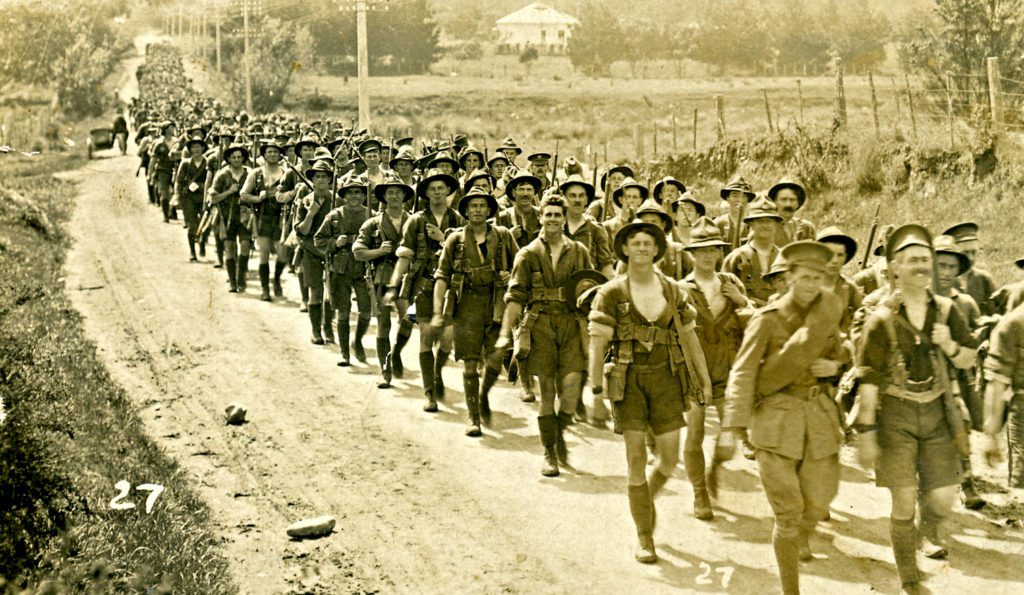
In order to fund the first world war, the United States government issued war bonds. They called them Liberty Bonds. Through extensive propaganda campaigns, the government attempted to plant the idea in the population that buying these bonds was the patriotic duty of an American citizen.
Americans would purchase these bonds, essentially borrowing money to the government.
The problem was, American citizens did not buy enough bonds to allow the government to fund it’s war effort.
This is where the Federal Reserve comes in and implements QE for the first time (though they didn’t call it QE at the time). The Fed bought government bonds with newly created cash so that the nation could fund it’s war effort.
But wars are extremely expensive. And this war was the most destructive war in human history.
The price of gold had been pegged to roughly $20/oz since the Coinage Act of 1834. Because of the extraordinary amount of spending during the first world war, the government was forced to reset the gold to $34/oz and criminalize the ownership of the metal for it’s citizens.
Effectively, the government had devalued it’s currency by 40% by printing money out of thin air.
Word War II
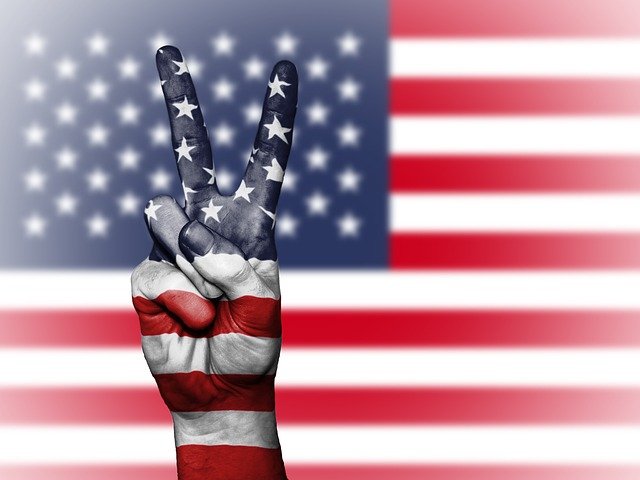
The North American land mass was virtually untouched during the word wars. As a result of this, countries around the world shipped their gold to the United States for safekeeping.
This resulted in the US having a massive stockpile of gold.
As World War II was coming to an end, the Bretton Woods system was established.
The simplified version of the Bretton Woods agreement is that the United States dollar was pegged to gold. And dozens of countries pegged their currencies to the US dollar.
This resulted in these other countries having a “gold-backed” currency by association. The US dollar was now the global reserve currency.
In the 1940s, the United States government had reached a debt to GDP (Gross Domestic Product) ratio of 120%. This meant that the governments debt was roughly 40% higher than the GDP of the American economy.
This was not sustainable and impossible to pay back in real terms.
The Gold Peg Abolished
During the 1950s, 60s and 70s, the United States ran huge fiscal deficits, resulting in the currency being devalued.
Inflation was rampant and the Federal Reserve pegged interest rates at near zero percent.
This allowed the debt to be “inflated away”. So the debt was never really paid back. It was simply devalued as compared to GDP. This allowed the financial system to keep functioning without the United States government officially defaulting on their debt.
But the rest of the world became concerned.
They saw the United States spending like drunken sailors and started demanding their gold back.
In 1971, President Nixon removed the gold standard from the dollar. Essentially, the United States government defaulted on their debt, albeit unofficially.
This is when the fully fledged fiat currency standard was born.
The Petrodollar System

In 1974, the United States lead by Richard Nixon, struck a deal with Saudi Arabia.
The simplified version of this deal is that Saudi Arabia and other OPEC nations would sell oil around the world exclusively in US dollars in exchange for US military protection.
This allowed the United States to hold on to their dollar global reserve status. Because it created demand for US dollars, preventing it from hyperinflating.
But this system has created some serious problems for the United States. The Petrodollar system and the Eurodollar system (which we will not be discussing here) have resulted in large global demand for dollars.
As a result, the strength of the United States dollar is perpetually higher than many other nations, especially emerging markets.
This might not sound like a bad thing, but it has been a disaster for the United States middle class.
With the US dollar being so much stronger than emerging markets, like China for example, private businesses and citizens are incentivized to buy goods and services from countries like China.
This includes labor.
This has resulted in US citizens being able to buy goods overseas for cheaper prices, but it has also resulted in the disappearance of the middle class’s manufacturing jobs.
They’ve all moved to countries like China and Mexico.
This has made it increasingly difficult for lower and middle class people to do financially well. Many are forced into lower living standards, unless they’re willing to take on second jobs or start some type of side hustle.
The Great Financial Crisis
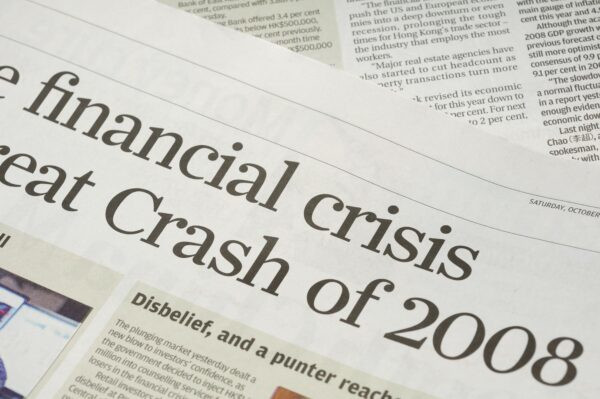
In 2008, the Fiat Currency regime nearly collapsed. Commercial banks in the United States were handing out mortgages to nearly every citizen that wanted one. They did not do any due diligence on qualifying lenders to insure they would be able to pay them back.
Additionally, they created new financial assets called derivatives. Basically, these new assets were mortgages combined into packages that you could invest in using your retirement account. These new assets were called Mortgage Backed Securities.
These MBS products were a huge hit. Banks, hedge funds, insurance companies, and retirement accounts invested in these novel assets.
Because of the irresponsible lending practices of the commercial banks, a huge real estate bubble developed. Housing prices skyrocketd nationwide. And people just kept buying more houses.
Eventually, some real estate owners started defaulting on their mortgages. They had overextended themselves financially, thinking that real estate prices could never drop.
But as people became unable to sustain their mortgages, real estate prices did drop. And so did the novel Mortgage Backed Securities of which huge banks and other institutions all over the world had heavily invested in.
Banks became insolvent as the value of their MBS holdings dropped like a rock.
The first one was Bear Stearns. The institution was facing iminent collapse. If the bank had been allowed to fail, it would have caused a cascade of events in which major banks and institutions all over the world would have collapsed. Indeed, this nearly happened.
But the US government, along with the Federal Reserve, stepped in. This is where the term “Quantitative Easing” was officially invented. The central bank bought government bonds and handed the newly created cash to the commercial banks and other failing institutuions.
The Fed also lowered interest rates with the intention of stimulating growth and lending in the economy.
This kept the financial system afloat. The world narrowly avoided an apocalyptic financial collapse that could have severely affected the personal lives of every citizen on the planet.
The Tragedy Of Moral Hazard
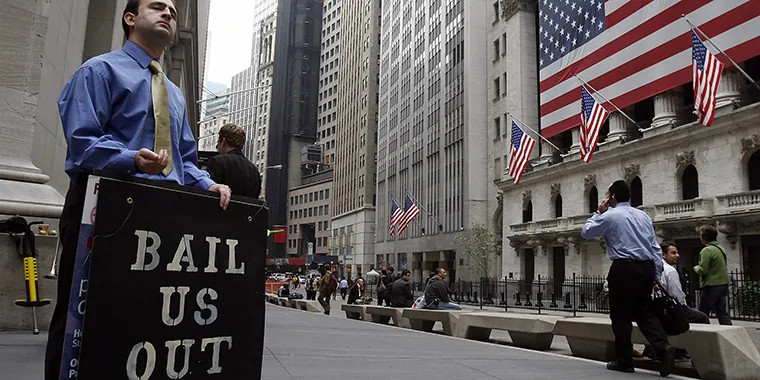
While governments and their central banks all over the world kept the financial system afloat during the 2008 crisis, this has created some long term problems.
It has since been revealed that the crisis was caused by a massive amount of criminal fraud taking place in the banking and financial sectors. Hardly any of the bad actors were prosecuted.
On the contrary. Many of them used the bailout money provided by the government to give themselves and their employees huge bonuses. All at the expense of me and you… the taxpayers.
This has caused many banks and institutions to continue their risky behavior. They saw that the government came to the rescue in 2008… and they realize that their institutions can not be allowed to fail. Because that would have cataclysmic global consequences.
They know that the Fed and the government will come to the rescue. So they are simply not incentivized to change their behavior.
This has extended to politicians.
Politicians have seen that the Federal Reserve can bail out the government if the alternative is bad enough. So they have completely thrown caution to the wind and left behind any illusion of fiscal conservatism.
The Crash Of 2020
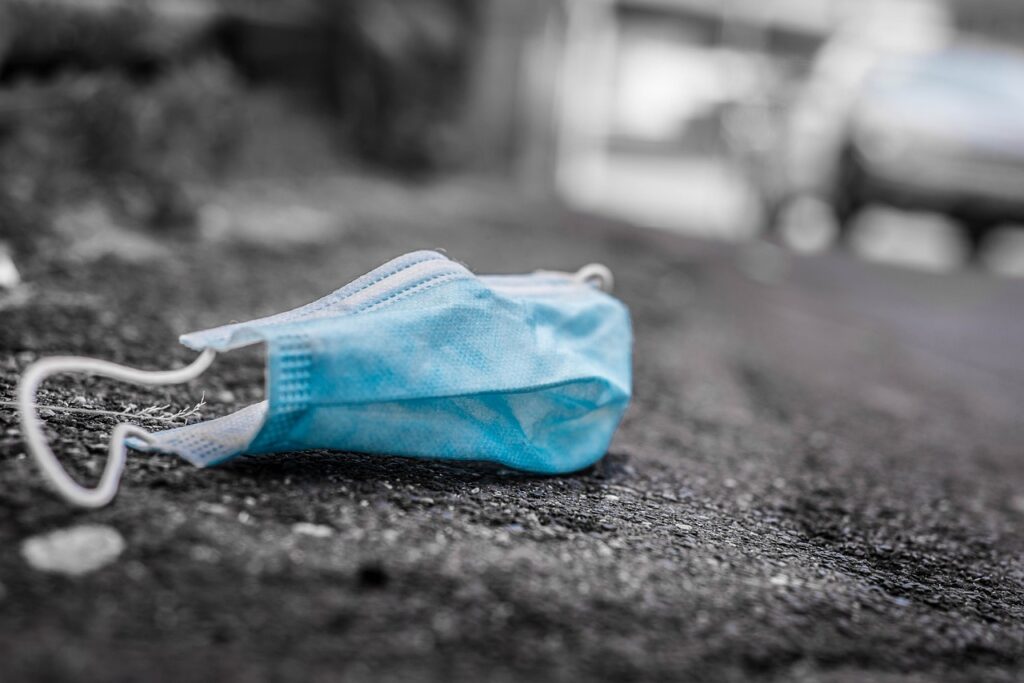
In 2020, the globe was smacked with a novel virus. After the World Health Organization declared COVID-19 a pandemic, the world went into a full blown panic.
Governments worldwide implemented authoritarian lockdowns without waiting for conclusive data saying that this was necessary.
It soon became clear that lockdowns didn’t really inhibit the spread of the novel virus. But politicians continued with their lockdown policies in order to save face. And because the media had completely frightened the globe into a full blown hysteria.
There was no consideration of how the lockdown policies would negatively affect the global economy. Or the mental health of citizens.
When lockdown orders became widespread, the markets crashed. Stocks cratered. Interest rates shot up. Oil prices crashed to negative 30 dollars a barrel. And everyone panicked.
How could the politicians justify these actions? How could they slam on the brakes of the global economy?
It’s because they knew that the central banks would bail them out. Central banks around the world bought government bonds in never before seen quantities. This bailed out governments and irresponsible politicians. And the politicians bailed out everyone else.
Inflation skyrocketed. Social unrest rose to nearly unprecedented levels.
But the failure of the financial system was narrowly avoided.
Since then, we have not seen governments change their behavior. Yes, lockdowns ended eventually. But government spending remains at much higher levels than before the pandemic hit.
Because again, they know that the Fed will come to the rescue.
Mathematically, this can not continue. It remains to be seen how this will resolve itself. Most likely, the world will fall into recession. And governments, with the assistance of central banks, will need to print more money.
Perhaps we can inflate our way out of the debt like they did after the world wars?
Maybe.
Regardless, governments and central banks understand that we’re nearing the end of the current financial order. And the rise of digital currencies might allow the escape that we so desperately need.
Digital Money
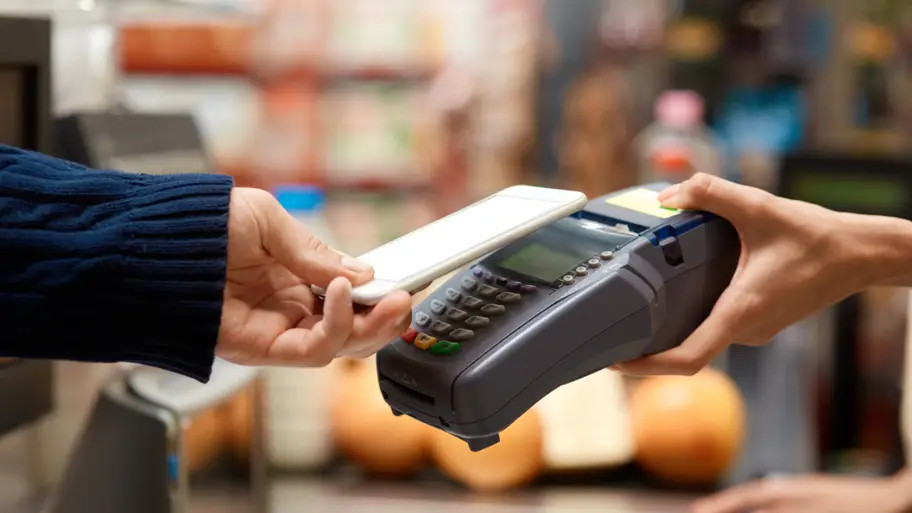
After the financial crisis of 2008, a new version of money suddenly appeared on the scene.
Satoshi Nakamoto released Bitcoin, a digital currency, on October 31 of 2009. We’ll talk more about Bitcoin in a bit…
First, we have to cover CBDCs.
Central Bank Digital Currencies
Central bank digital currency (CBDC) is a technology that governments have long been working on. Research and development has been going on behind the scenes for many years.
Since the launch of Bitcoin, they’ve doubled down. And they’ve also taken inspiration from the cryptographic technology used to create Bitcoin.
Because of the massive financial crises that governments have had to contend with over the last few decades, it’s becoming increasingly clear that the accumulated debt will not be paid back.
Remember, the paper money we use today is completely backed by debt. So by extension, our currency is at the mercy of interest rates and the obligation of the debt needing to be paid back.
But there’s just too much of it. The US government’s interest expense is already higher than their military spending. And they’re fast approaching debt levels where they will be forced to issue bonds (borrow money) just to cover the interest of their debt!
What happens to the financial system then?
Nobody really knows. Because this exact scenario has never happened before.
But it likely won’t be good.
So governments and central banks have been working tediously on CBDCs. A digital currency would theoretically allow a central bank to issue a currency that’s truly backed by nothing.
They would attempt to stimulate economic growth by simply giving money to targeted groups of people. And they would keep inflation in check by manually adjusting interest rates for citizens in order to slow down spending and encourage saving instead.
Of course, they could also confiscate your money arbitrarily if you’re deemed to be a criminal or political dissident.
Regardless of the moral qualms one might have about CBDCs (and I have many), I don’t believe it will be possible for a government to successfully manage a currency in this centralized way.
Economic distortions will be the new norm. This will take the form of shortages in goods, services, and labor. Prices will be all over the map and completely unpredictable.
It’s analogous to the Soviet Union trying to centrally manage their communist utopia. Policy makers were charged with the task of setting prices for each individual item in the economy.
Imagine politicians having to set prices for the thousands of items present in your local supermarket.
Setting aside the messiness of trying to centrally manage an economy, there are also some major threats that a CBDC would present.
CBDC Threats
With a CBDC, governments can truly create (or destroy) money out of thin air, with no debt constraints. This allows for scary levels of control and surveillance.
A CBDC would allow authorities to:
- Send international payments with intermediaries like the SWIFT system
- Try to give access to banking to the unbanked
- Track and surveil any and all transactions
- Block transactions that violate their rules
- Add expiration dates to citizens money
- Add jurisdiction limitations
- Take away (confiscate) money from citizen wallets
- Give money directly to citizens for stimulus or rewards
- Impose negative interest rates on individual citizen accounts
- Program money to have different rules for different groups
- Take away or reduce controls and profits that commercial banks have over the financial system
Needless to say, CBDCs give unprecedented and scary levels of control to governments.
Are CBDCs A Conspiracy Theory?
The prospect of CBDCs is dismissed by many reasonable people to be some type of extremist conspiracy theory.
But the reality is, we’re already seeing this in some parts of the world.
China, for example, already has a fully functional CBDC in parts of the country. Attached to the money, there’s a social score. So if a citizen is caught breaking the law or speaking ill of the government, their social score is negatively affected.
There have been credible reports of Chinese citizens having jurisdictional limitations on their money based on their social score. So if they’re caught breaking the law, their money might cease to work outside a kilometer radius from their home.
But that would never happen here… right?
Western countries have been researching and developing CBDCs for several years now. Some of these countries include:
- Sweden
- The European Union
- The United States
- The United Kingdom
- Canada
- Japan
Wouldn’t our democratic laws prevent abuse of these tools?
That’s what I used to think. But abuses of the financial system have already occurred, even with the money we use today.
In early 2022, a massive protest in Canada happened opposing the government’s COVID-19 related restrictions and vaccine mandates.
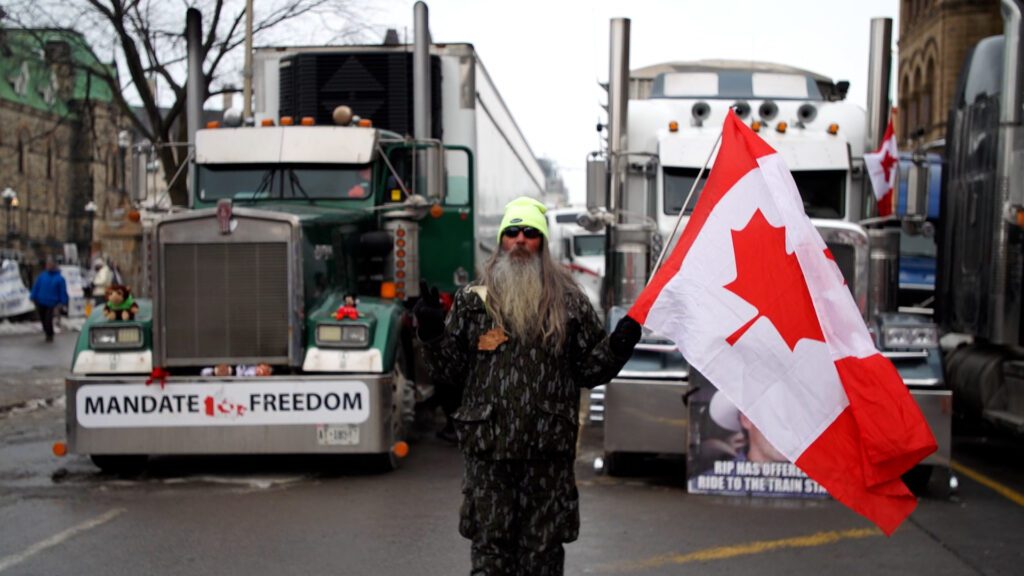
The government was unwilling to bend and acknowledge legitimate grievances. Instead, they panicked as much of the population started siding with the protesters.
The government enacted what is called The Emergencies Act, a light version of martial law. Police officers were summoned from all over the country to physically remove protesters from the nation’s capital.
But worst of all, the government froze the bank accounts of citizens protesting and even some of the people who supported the protest effort through financial donations.
Whether or not you agreed with the protest, it’s extremely dangerous and concerning that a government would freeze bank accounts without any due process. And a CBDC would allow political leaders to take actions like this with impunity.
No matter your political world view, you will eventually find your opinions are at odds with your government. As political winds shift from left to right and back again, you’re going to have major disagreements at some point.
And if voicing your opposition means you can no longer transact in the economy, many people will simply stay quiet. And the government will have free reign to do what it wants without taking the citizens’ opinions into account.
Bitcoin
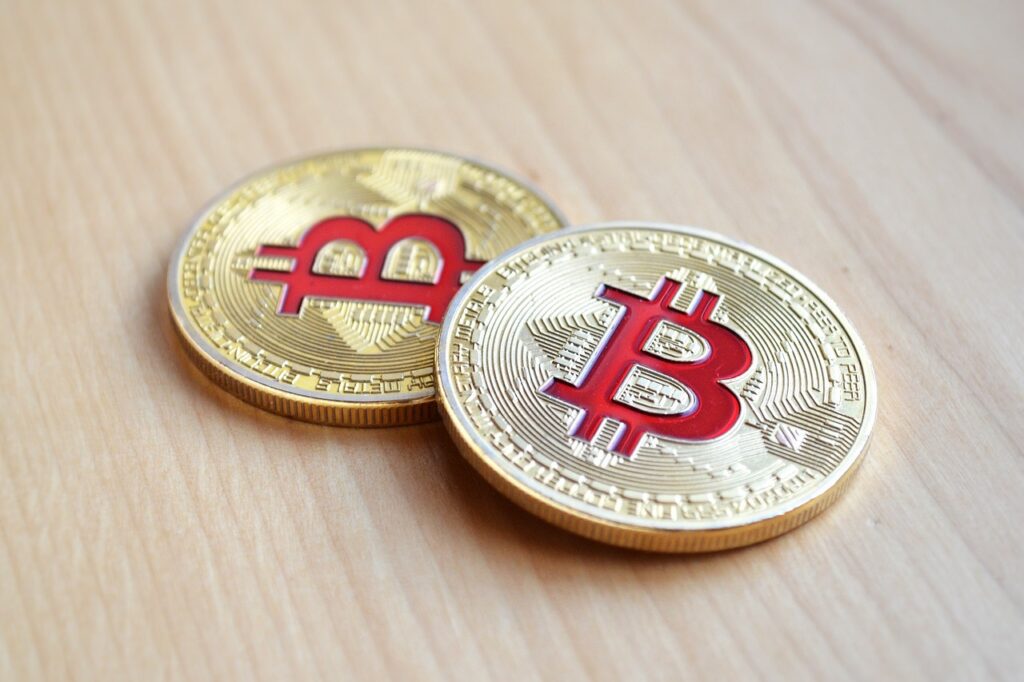
Bitcoin is a digital money that could solve current problems we now face with our money… but it could also prevent abuses that would almost certainly arise with CBDCs.
Before Bitcoin, there had been many attempts at creating digital money to transact over the internet. People recognized that most transactions were moving online, so they experimented with solutions like Hashcash, Bitgold, and eMoney.
As transactions go digital, privacy and freedom is becoming a larger concern due to all transactions being intermediated by just a few large institutions.
After the 2008 financial crisis, Satoshi Nakamoto launched a solution to these concerns: Bitcoin. Bitcoin is a peer to peer money that allows users to transfer value directly to each other, with no banks in between.
Participants all over the world can store the entire network on a small computer due to the bitcoin network’s relatively small data requirements. This device is called a node, and every node on the network interacts with all other nodes. Every 10 minutes, the nodes verify that all activity on the network is legitimate.
All of the small computers “talk” to each other over the internet and come to a consensus. In order for a transaction to be verified, all of the nodes globally have to agree.
This makes it impossible for the money to be tampered with. Transactions can not be prevented, and money can not be confiscated.
Additionally, the bitcoin network can not be shut down by any government or authority. Because the entire network lives on the nodes. And the nodes are distributed all over the world, run by private citizens like you and me.
It’s been estimated that there are tens of thousands of nodes running all over the world. So in order for the network to be forcefully shut down, all 10,000 nodes would need to found and turned off… at the same time.
The video above offers a simplified explanation of Bitcoin.
Powerful Bitcoin Characteristics
There are a number of characteristics that make Bitcoin a powerful and likely unstoppable force that will potentially change the global financial system.
Decentralization
We’ve talked about this already, but Bitcoin is completely decentralized. There’s no single attack vector. So the network can not be shut down or controlled by any authority.
Security
The network uses strong cryptographic blockchain technology to secure transactions and maintain the integrity of the network and the ledger.
Transparency
While the network can’t be controlled, it is completely transparent. Anyone can see any transaction that’s taken place on the network. This creates a high level trust that the network has not been tampered with. It also makes it a terrible money for criminal activity.
Limited Supply
There are only 21 million “coins” that exist. There will never be more. This makes Bitcoin a deflationary money. This is exactly opposite to the current global financial system. If Bitcoin were to overtake the current status quo, the prices of consumer goods and services would perpetually go down. Forever.
Divisibility
One Bitcoin is divisible into 100 million smaller units, called Satoshis. This means that you don’t need to buy a full coin, and makes it practical to make very small transactions.
Portability
Bitcoin is a truly global money. If you have access to a smartphone or computer, you can send and receive Bitcoin. This is unlike physical gold, which needs to be shipped across oceans. It’s also unlike the government issued money we currently use. Have you ever tried to conduct a wire transfer to a country that your government is at odds with? With Bitcoin, you don’t need permission from anybody.
Bitcoin covers all of the characteristics that a good money should have as outlined by the Austrian School Of Economics. It is:
- Divisible
- Portable
- Durable
- Fungible
- Verifiable
- Scarce
And unlike gold, Bitcoin is perfectly suited to the global, fast paced, digital economy we enjoy today.
How Could Bitcoin Win?
How could Bitcoin possibly overtake the massive and powerful financial system of today?
Greshan’s Law states:
Bad money drives out good money.
This is a principle that suggests when 2 forms of money exist in an economy, the one with higher intrinsic value will drive out the one of lower value.
For example, if gold coins and debased or counterfeit coins were both in circulation and considered legal tender, Gresham’s Law predicts that people would spend the debased or counterfeit coins and hoard the gold coins because they have higher intrinsic value.
As Bitcoin continues to increase in value, folks will start to save it. And indeed, this has been happening for over a decade. Eventually, those with large amounts of Bitcoin will want to spend it. Maybe they need a car or a house.
Isn’t it too volatile?
Currently, yes. But as the size and market cap of the network grows, you can expect the volatility to lessen. This is already happening, though it’s still too volatile to be a good form of money to build your entire life around.
Think of it like a share of a company… a brand new small business will have a very volatile share price.
For example, when Amazon was a new company, the price of it’s stock was extremely volatile. During the market crash of 2000, Amazon’s stock price dropped 94%. But as the company has grown and matured, it has become much more stable.
The price of Bitcoin can be expected to behave the same way as adoption grows and the market cap increases.
What about all the other cryptos?
Since bitcoin, there have been nearly 20,000 other cryptocurrencies, many of which are scams. There are a few that make legitimate claims of smart contract technology.
But any competitor has almost no chance of competing with Bitcoin due to the network’s large network effect and growing popularity.
Let’s Wrap This Up
We’ve covered a lot today. My hope is that you now have a good understanding of where money comes from, the historical context, and how it works.
The subject of money is a long and deep rabbit hole that you could go down if you want to learn more intricate details.
I’ll list some books and sources that you could explore of you feel inclined to do so.
- The Creature From Jeckyl Island – G. Edward Griffin
- The Changing World Order – Ray Dalio
- Debt: The First 5000 Years – David Graeber
- The Sovereign Individual – James Dale Davidson
- Economics In One Lesson – Henry Hazlitt
- What Has Government Done To Our Money? – Murray N. Rothbard
- Human Action – Ludwig von Mises
- Democracy: The God That Failed – Hans-Hermann Hoppe
- Antifragile – Nassim Taleb
- The Bitcoin Standard – Saifedean Ammous
- The Internet Of Money – Andreas M. Antonopoulos
- The Price Of Tomorrow – Jeff Booth
- The All In Podcast
- Macro Voices
- Eurodollar University
- Wealthion
- The Market Huddle
- Palisades Gold Radio
- Forward Guidance
- The Peter Schiff Show
- PBD Podcast
- We Study Billionaires
- Bitcoin Audible
- Blue Collar Bitcoin
- What Bitcoin Did
- Bitcoin Rapid Fire
- The Canadian Bitcoiners
- The Bitcoin Standard Podcast
- Coin Stories
- Tales From The Crypt
- Swan Signal
- The What Is Money Show
We covered a lot today!
You should now have a thorogh understanding of money and how it works. And my hope is that this will serve you well as you navigate life moving forward.

Written By:
Johnny Friesen
Just a blue collar guy passionate about finance, network marketing, and writing. When I'm not working on a car, you'll find me working on various side hustles and sharing my musings with the world.
ATTENTION: MLM and Direct Sales Reps...

- Attract Qualified Business Leads
- Enroll Customers Without Prospecting
- Build A Team Of 3000+ People
